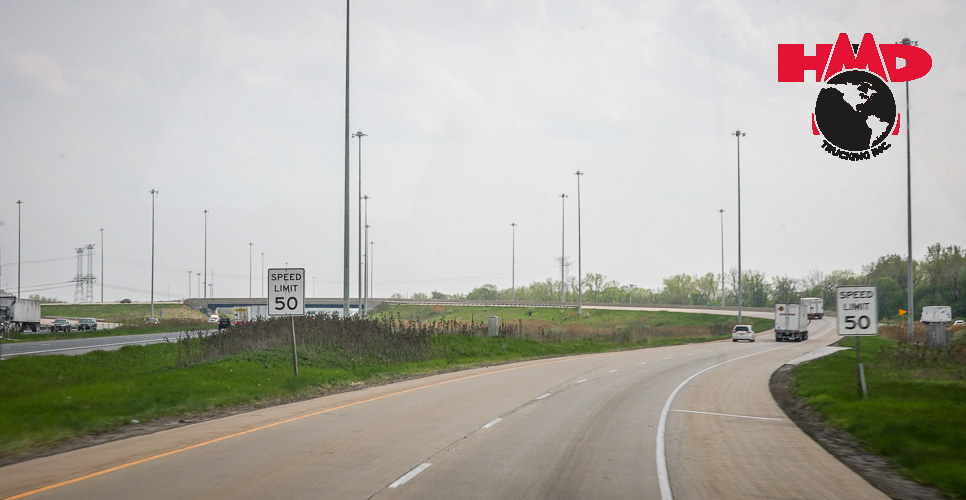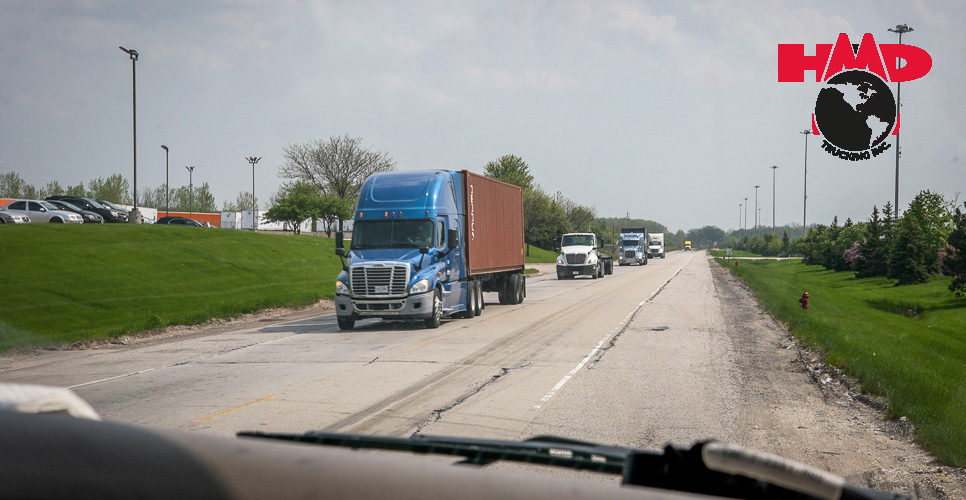Speed limits for trucks are a critical component of road safety regulations worldwide. These limits are not set as random numbers. They are smartly worked-out guidelines for the safety of the driver and his protection, for the protection of the integrity of freight. The speed of semi-trucks is crucial to manage due to their enormous sizes and weights, which significantly impact the risk of accidents, traffic flow, and the environment.
This article looks at the reasons as to why the speed limits for trucks need regulation, the state of affairs on speed limits, including what determines them, and the implications attached to them when not observed.
Contents:
- Why Are There Speed Limits for Trucks?
- Overview of Current Truck Speed Limits
- Factors Affecting Commercial Truck Speed Limit
- Consequences and Penalties of Speeding for Truck Drivers
- Conclusion
Why Are There Speed Limits for Trucks?
Truck speed limits are crucial for ensuring road safety and minimizing the risk of accidents. These regulations consider several factors, including the size and handling characteristics of trucks, which require longer distances to stop compared to smaller vehicles. Additionally, semi-truck speed limits help mitigate the impact of heavy vehicles on road infrastructure, reducing wear and maintenance costs. Let's delve into the reasons behind the establishment of speed limits for 18-wheelers.
Enhancing Safety
The truck drivers' speed limits are mainly an effort to enforce safety measures on the road. Trucks normally require more distance than that of small vehicles in order to come to a halt. Stopping distance at high speeds becomes longer, increasing the chances of one meeting an accident. This goes a long way for truck drivers to reduce the chances of occurring accidents, thus protecting them and other users of the same road.

Protecting Vulnerable Road Users
Interaction of heavy vehicles with vulnerable road users such as pedestrians, cyclists, and motorcyclists means that the impact is much more severe. Speed limits in all lanes for heavy trucks are set with a purpose of highway safety to those groups, thereby reducing the severity of injuries in case of accidents.
Lower speeds would allow truck drivers additional time to react to sudden moves of vulnerable road users and could even save lives.
Improving Traffic Flow
This, contrary to common belief that the speed limits might retard even further the rolling traffic, can actually enhance the traffic flow. Maintaining a constant speed: this is some help trucks can be. This would enable the trucks to flow freely without being interfered with, hence avoiding bottlenecks and keeping the traffic from turning into jams. Most especially, this holds true for freeways and multi-lane roads, whereby trucks that obey speed limits could hold a more efficient and predictable flow of traffic.
Environmental Considerations
This counts for the ecological factor as well: trucks that run at 55 mph, for instance, consume less fuel and produce less pollution than trucks circulating at 80 mph. It belongs to the set of essential initiatives in the fight with climate change, as the transport sector hugely contributes to the total of global greenhouse gases. Speed regulation is among those tools that aid in reducing the effect by ensuring more fuel-efficient travel for heavy vehicles.
Legal and Regulatory Compliance
Thirdly, the speed limits put down form the legal and regulatory compliance which binds truck drivers by the law. There are some specific traffic laws by particular states and regions which define the limits of commercial vehicles. Following such limits then becomes a matter of either security or legality.
Failure to comply carries serious penalties, such as keeping a clean driving record through the completion of traffic school, keeping insurance, paying the payments on time, and not having multiple violations in a short time frame.

Overview of Current Truck Speed Limits
For trucks, speed limits may vary from state to state, in keeping with local road conditions, infrastructure, and safety concerns. The maximum allowed speed will vary within one state, of course, if it is different for various types of roads. Besides, usually, the limit of speed on the rural interstate is higher than on urban roads. In the USA, the truck speed limit on highways varies by state, ranging from 55 to 70 mph. Most of the European countries set it much lower: from 80 to 90 km/h (50 to 56 mph) on highways.
All this diversity is important for a truck driver to know when to cross from state to state or even national borders to always be in compliance with the local law and state-specific rules.

Factors Affecting Commercial Truck Speed Limit
Several key factors influence the determination of commercial trucks speed limits, including:
- Vehicle size and weight mean that heavy vehicles with larger loads simply require more time and distance to stop, therefore needing lower speed limits that will guarantee safety.
- Road Type and Condition: The conditions may dictate the sharpness of curves, gradients, and even surface quality for safer speeds. This explains why the type of road dealt with can vary the stipulated speed limits, such as, in the case of highways, which may warrant higher limits compared to urban roads where there is much presence of pedestrians and cyclists.
- Traffic Density: The traffic volumes at times are too high such that the speed limits are dropped to avert danger and create more order.
- Weather and Visibility Conditions: Rain, fog, snow, or additional weather conditions can affect a lot of the times needed by a vehicle to stop and additional weather can affect its overall maneuverability. Therefore, temporary changes in speed may be necessary.
Modern trucks, on the other hand, that have up-to-date security features, such as automatic braking systems and stability control, are the ones that might have an influence on policies regarding the speed limit. They are designed in such a way that it enables people to proceed at a higher speed, maintaining safety.

Consequences and Penalties of Speeding for Truck Drivers
First, it has been proved that when it comes to road accidents that commercial trucks are involved in, it is because of speeding. Risks may be involved if the speed limits are:
- Legal penalties: The penalties can be huge fines for speeding, while repeat offenses can ultimately have repercussions such as commercial license suspension or its revocation from the driver.
- Higher accidents risk: Risk for accidents, with all that implies injuries, fatalities, and damage to material, is incommensurately increased by speeding drivers. Expensive Insurance Premiums: Speeding violations can eventually make the truck driver and, by extension, his employer pay more money in the form of insurance.
- Reputation damage: Professional drivers and those belonging to the companies will have reputation damage, which will take away their business or employment opportunities that might come for them.
- Environmental Impact: Driving above the specified speed contributes to increased fuel consumption and air emissions. Thus, the high-speed limits set along the roadways of different countries are not in
The limits set for truck drivers are enforced with the ultimate consequences and penalties, which have been designed to mitigate the vulnerability of speeding to both accidents and damage to the infrastructure. The firm sets a responsible attitude toward the observation of speed regulations that protect the environment and road safety.

Conclusion
Speed limits are, therefore, basic in road safety – more so to the driver of a commercial truck. The commercial driver will find some limits that his life, the goods he is carrying, and more so, even other road users, especially the most susceptible, are taken care of. This is going to assist truck drivers in the knowledge of why there are speed controls, what influences the speed limits, and consequences for not following the set limits on roads, contributing to a network that is safe, efficient, and transport-friendly to the environment. Therefore, compliance with speed limits imposes a moral obligation, rather than just a legal one, on every driver asserting himself to the road.
Consider turning your career to HMD Trucking! Join a fast-growing company where you'll find a fleet of modern, well-maintained semi-trucks – all equipped with Auxiliary Power Units and Fridge-Freezers – embedded in a company culture as welcoming as family. Enjoy the competitive pay and lavish bonuses that will truly be shown as an appreciation for being consistent with your hard work. Professional dealing at HMD Trucking is truly treasured, and we give the best support that does not compromise, always makes things happen for our truckers. Ready for a top truck driver job? Apply now!


